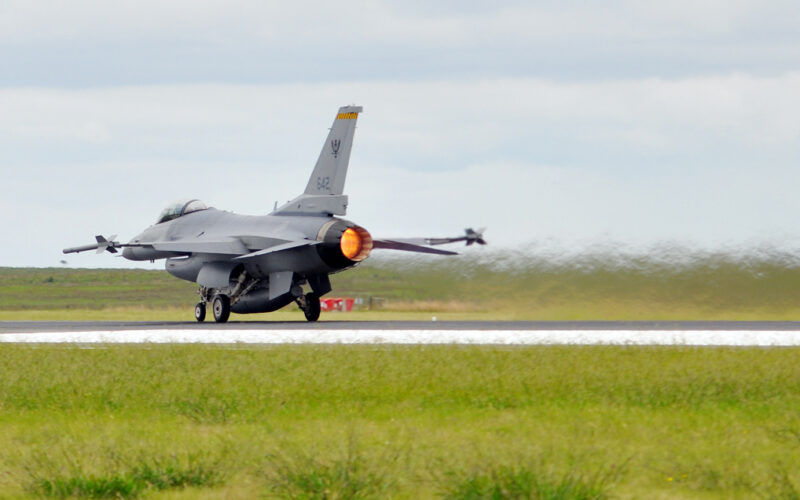Singapore Lifts Suspension on F-16 Fleet, Clears “Fighting Falcons” for Flight
The Republic suspended operations of more than 60 of its F-16 fighter jets earlier this month following a crash involving one of the aircraft during takeoff from Tengah Air Base in an incident that occurred on May 8th.
(DEFENCE SECURITY ASIA) — Singapore will resume flying its F-16 fighter jets after suspending their operations earlier this month after one of the aircraft crashed during takeoff from Tengah Air Base early this month.
Singapore began operating more than 60 F-16 fighters developed by Lockheed Martin in 1998.
According to Singapore’s Ministry of Defense, this month’s crash was caused by a malfunction in the aircraft’s pitch rate gyroscopes, which provided incorrect data to the flight control computer.
“This caused the pilot to lose control of the aircraft during takeoff,” the ministry stated today. The pilot successfully ejected using the ejection seat.
The ministry further stated that each F-16 is equipped with four gyroscopes, and the failure of all four is extremely rare.

This is the first time such a gyroscope malfunction has occurred in Singapore’s F-16 fleet.
The ministry assured that all gyroscopes in the F-16 fleet would be inspected and approved before these fighters are cleared to fly again.
Lockheed Martin will also investigate the specific cause of the gyroscope failure.
The incident on May 8th was the first crash involving a Singaporean F-16 since a 2004 incident in which a pilot died during a night flight training in Arizona, USA.
The Singapore Air Force owns 62 F-16C/D Block 52 aircraft, with 14 stationed at Luke Air Force Base in Arizona for training purposes, and the remaining 48 at air bases within the Republic.
Singapore received 62 F-16s between 1998 and 2003.

The island republic upgraded its F-16 fighters to remain serviceable until the mid-2030s, when they will be replaced by 12 fifth-generation F-35 fighters, also developed by Lockheed Martin.
Singapore chose the F-35A conventional variant and the F-35B (VSTOL – Vertical Short Take-Off Landing) variant.
The F-16 upgrade under the Mid-Life Upgrade (MLU) program, valued at US$2.4 billion (RM10.8 billion), included equipping the fighters with the AESA AN/APG-83 SABR radar developed by Northrop Grumman.
In addition to the new AESA radar, the upgraded F-16C/D Block 52s received new mission computers, a Joint Helmet Mounted-Cueing System (JHMCS) allowing integration with AIM-9X air-to-air missiles, and the capability to carry and launch GBU-38 Joint Direct Attack Munition (JDAM) and GBU-49/50 Enhanced Paveway II Dual-Mode Guided Bombs and CBU-105 Sensor-Fuzed weapons.
The upgraded aircraft reportedly use an Electronic Warfare Suite made in Israel, although this has not been officially confirmed by any party in Singapore.
The Singapore Air Force also confirmed that it had integrated the Python-5 air-to-air missile as part of the MLU program for its Lockheed Martin F-16 C/D/D+ fighters.

Developed by Israel’s Rafael Advanced Defense System, the Python-5 is considered one of the most capable short-range air-to-air missiles used by the Israeli Air Force, capable of reaching speeds up to Mach 4 and a range of 20km.
The Israeli Air Force also plans to equip its F-35 “Adir” fighters with the “Python-5.”
The development of the Python-5 air-to-air missile began in the 1990s and was publicly revealed at the Paris Air Show in 2003.
In addition to the Singapore Air Force, the Python-5 is also used by the air forces of India, Georgia, and Peru.
The upgrade program for Singapore’s F-16C/D/D+ aircraft is being carried out by Lockheed Martin and ST Engineering Aerospace. — DSA



Comments are closed.